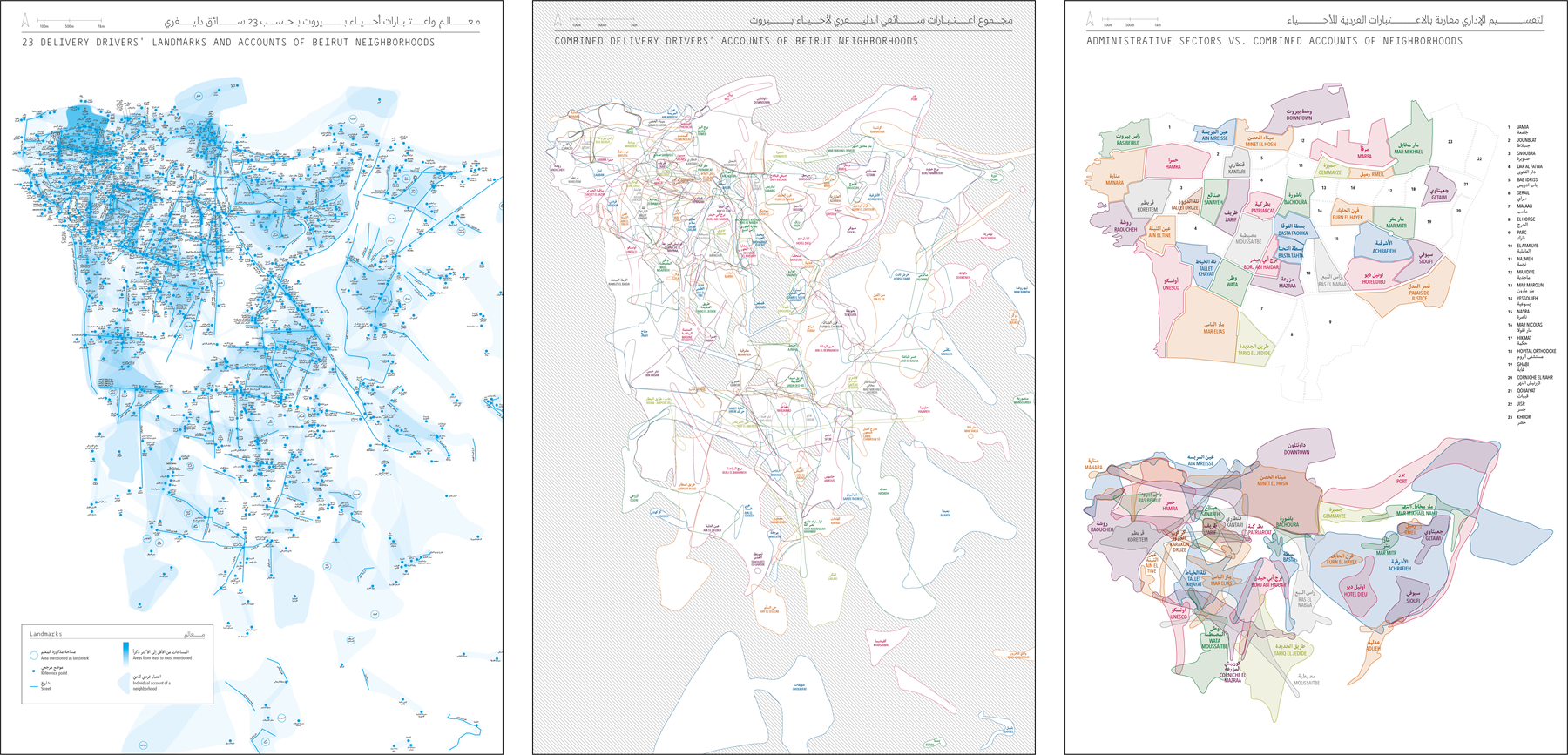Seeing the City as a Delivery Driver

By mapping the trajectories and networks of landmarks on which Syrian food delivery drivers rely to navigate the city, this research translates the challenge of studying “refugee urbanization” into an actual demonstration of the competence and performance of these urban actors as they learn and navigate Beirut.
×
This research was
conducted as part of Refugees as City-Makers, a project that explored
the role of refugees as active agents in the production of the cities they
inhabit, highlighting their roles as home-makers, workers, city-navigators, and
political agents.
We chose to investigate the trajectories of Syrian delivery drivers in Beirut, unraveling the thick social networks on which they build an expansive knowledge of the city's landmarks and its sectarian and classed landscapes, and how they navigate the militarized security of its streets. Beyond documentation, we read in these men’s visible occupation of public spaces the distinct claims of those who demand their right to the city, claims put forward in defiance of bodily dangers, legal constraints, social stigmatization, and daily harassment in a country where anti-Syrian sentiment is fueled by historical tensions and exacerbated by working-class competitions over employment. Ultimately, we found refugees to be actual participants in the reproduction or transformation of the material of the city itself, its practices and infrastructures.
We chose to investigate the trajectories of Syrian delivery drivers in Beirut, unraveling the thick social networks on which they build an expansive knowledge of the city's landmarks and its sectarian and classed landscapes, and how they navigate the militarized security of its streets. Beyond documentation, we read in these men’s visible occupation of public spaces the distinct claims of those who demand their right to the city, claims put forward in defiance of bodily dangers, legal constraints, social stigmatization, and daily harassment in a country where anti-Syrian sentiment is fueled by historical tensions and exacerbated by working-class competitions over employment. Ultimately, we found refugees to be actual participants in the reproduction or transformation of the material of the city itself, its practices and infrastructures.
×

